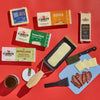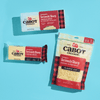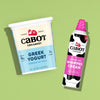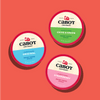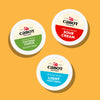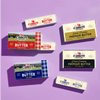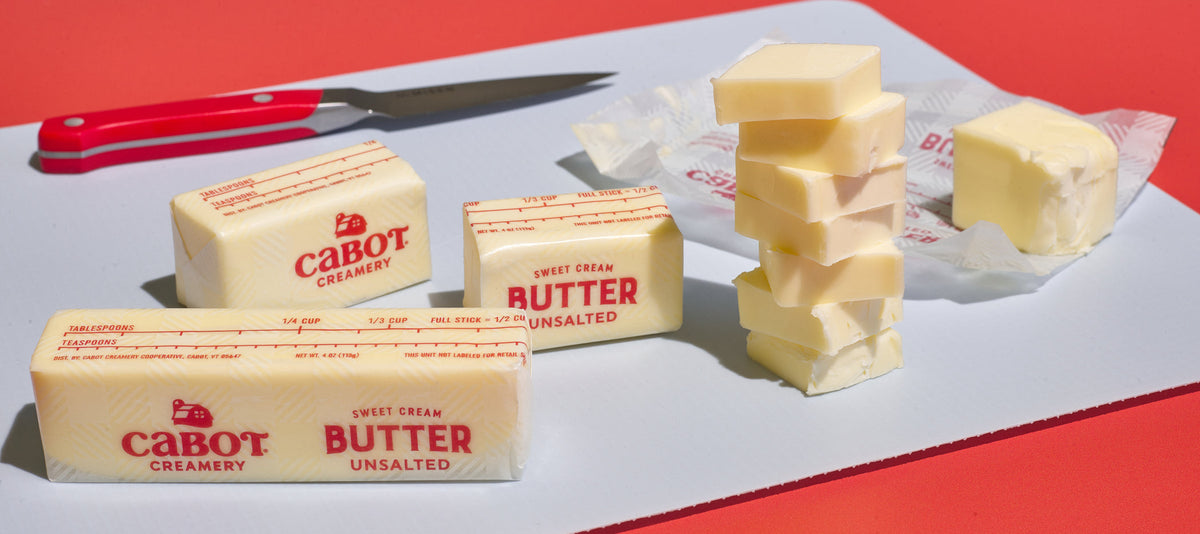
How many tablespoons in a stick of butter?
Ask any chef what their secret is to getting that restaurant-level quality of food, and nine out of ten times the answer is butter. Whether you’re baking cookies or sauteing vegetables, butter is the delicious essential you just can’t skip. However, while enjoying it is the easy part, measuring it is where things can go astray. This comprehensive guide will take you through everything from how many tablespoons in a stick of butter to exactly how to measure butter - the right way.
But what exactly is a "stick" of butter, and how much does a stick of butter weigh? If you’ve ever seen a recipe that calls for “1 stick of butter,” here’s what that means:
1 stick = 1/2 cup of butter = 8 tablespoons of butter = 4 ounces of butter (by weight) = 113 grams of butter
While this measurement is common in the US, it may be confusing if you’re following a European recipe, where butter is typically sold in 250 gram blocks (approximately 8.8 ounces). Understanding the US stick measurement can be important when it comes to converting recipes.
So, what is the best way to measure how many tablespoons are in a stick of butter? The answer is simple:
- 1 stick of butter = 8 tablespoons
- 1/2 stick = 4 tablespoons
- 1/4 stick = 2 tablespoons
Unfolding the Secrets of the Butter Wrapper
Most sticks of butter come with easy-to-use markings printed on the wrapper that divide it up into tablespoon measurements, but you want to be careful when it comes to trusting them. To level up your kitchen skills, keep a digital scale on hand to measure out your butter, especially when it comes to recipes that require more precision, like baked goods. Use this convenient guide to see how many grams you’re looking for when a recipe calls for tablespoons or sticks of butter.
- 14 grams = 1 tablespoon
- 21 grams = 1 1/2 tablespoons
- 28 grams = 2 tablespoons
- 35 grams = 2 1/2 tablespoons
- 42 grams = 3 tablespoons
- 50 grams = 3 1/2 tablespoons
- 56 grams = 4 tablespoons (1/2 stick)
- 100 grams = 7 tablespoons
- 113 grams = 8 tablespoons (1 stick)
- 227 grams = 16 tablespoons (2 sticks)
However, if you are planning on going by the measurements on the wrapper, make sure to use a sharp knife and cut straight down in order to try and get the most accurate amount. This method works great for instances like measuring out a tablespoon of butter for sauteing veggies or pan-frying meat.
Go Butter or Go Home - How Many Ounces in a Cup of Butter
When working with larger amounts, you might wonder how many ounces are in a cup of butter. Here’s what you should know:
1 cup of butter = 8 ounces (by weight) = 16 tablespoons = 2 sticks = 227 grams
Wondering whether you should be using the ounces measurement on your scale or the fluid ounces measurement? It’s important to note that when measuring butter, “ounces” typically refers to weight rather than fluid ounces. Don’t confuse weight ounces with liquid volume ounces—especially when baking, where precision is key. Understanding butter weight is especially useful when recipes call for butter by mass instead of volume—this is common in European or professional baking recipes.
|
Cups |
Ounces |
Sticks |
Tablespoons |
Grams |
|
1/4 cup |
2 oz |
1/2 |
4 tbsp |
57 g |
|
1/2 cup |
4 oz |
1 |
8 tbsp |
113 g |
|
1 cup |
8 oz |
2 |
16 tbsp |
227 g |
If you buy butter internationally, you might encounter packaging in 250-gram blocks. A quick conversion: a 250-gram block is approximately equal to 2.2 sticks of butter.
Butter Measuring 101 - Using Your Tools Correctly
It’s always better to use the tools you have on hand rather than guesstimate your amounts, especially with butter. Accurate butter measurements are crucial in baking, where the ratio of fat to flour affects texture and rise. Even in cooking, too much or too little butter can change the flavor, richness, and consistency of your dish. The right amount of butter can make or break your recipe, and be the deciding factor between a delicate, flaky pastry or a dense dough. If you don’t have a scale, we have tips to get the right butter measurements using volume based tools like tablespoons and cups.
But first, a little hack for softening butter! Grab your stick of butter and place it upright on a plate. Get a heat-safe glass and fill it with boiling water and let sit for a few minutes. Then, empty the glass and place it upside down on the plate to cover the stick of butter. After 5 minutes, you should have perfectly softened butter.
Softened butter is perfect for measuring by volume as it gives you a chance to eliminate air pockets when packing the butter into your cup or tablespoon. Simply pack it in tight and level with a knife.
What Comes First - Melting Vs. Measuring Your Butter
Good to know - if a recipe calls for melted butter, double check the instructions. If it says "half a cup of melted butter", melt first, then pour into your cup to measure. On the other hand, if it says "half a cup of butter, melted", then measure first, by weight or volume, using the handy guides above before melting it.
Wondering how to properly melt butter without burning it? The melting point of butter is somewhere between 82°F and 97°F. The best way is to use a saucepan on a stove over low heat with occasional stirring. This method allows you to keep a close eye on your butter and control the melt level. However you can also microwave butter on HIGH for 30-45 seconds, checking and stirring every 15 seconds to make sure it’s not burning.
Butter Study Up
Now that you’re a butter measuring pro, you might be wondering about butter storage tips, swaps, and substitutes. Whether you’re trying to avoid dairy, wondering if butter freezes, or thinking about unsalted vs. salted butter, here are some butter FAQs that you should know about.
-
Can I substitute margarine or oil for butter?
Yes, but results may vary. Here’s a quick guide on butter swaps.
Vegetable oil: Use ¾ cup oil for every 1 cup of butter.
Margarine: Can be used 1:1 in most cases, but flavor and texture may differ.
-
Is clarified butter the same as regular butter?
No. Clarified butter (ghee) is butter with milk solids removed. It has a higher smoke point and is used differently. Since it lacks the water and milk solids present in regular butter, ghee can affect texture and moisture in baked goods when used in place of butter.
-
Can I freeze butter?
Yes! Butter freezes well for 5 to 9 months. Wrap tightly in plastic wrap or place into a freezer bag to avoid freezer burn. Unsalted butter can be frozen for up to five months, while salted butter can be frozen for up to nine. To thaw frozen butter, simply place in the refrigerator overnight or submerge it in a sealed plastic bag in cold water for about an hour.
-
Is salted butter different from unsalted butter in baking?
Yes. Use unsalted butter for baking to control salt levels. Since salt content varies between salted butter brands, using unsalted butter helps ensure consistent results every time you bake. Only have salted butter on hand, but the recipe calls for unsalted? If using salted butter, reduce the added salt in the recipe. A general rule of thumb is to reduce the salt by ¼ teaspoon for every half cup (or 1 stick) of salted butter used. Learn more about salted vs. unsalted butter for baking.
Now that you know how many tablespoons are in a stick of butter, how to convert ounces to cups, how to weigh butter in grams, and more, you can cook with confidence! Check out Cabot's collection of baking recipes and bookmark this guide or print the conversion chart to keep handy in your kitchen. Now, go forth and butter better, every time!
More Cheese Please
Sign up for more helpful articles, recipes and updates from Cabot! Plus get 15% off your first purchase.
